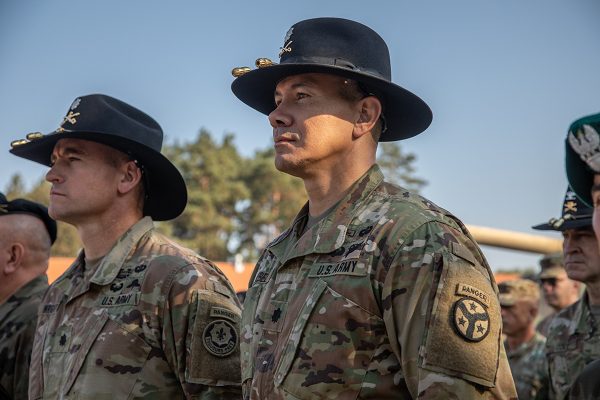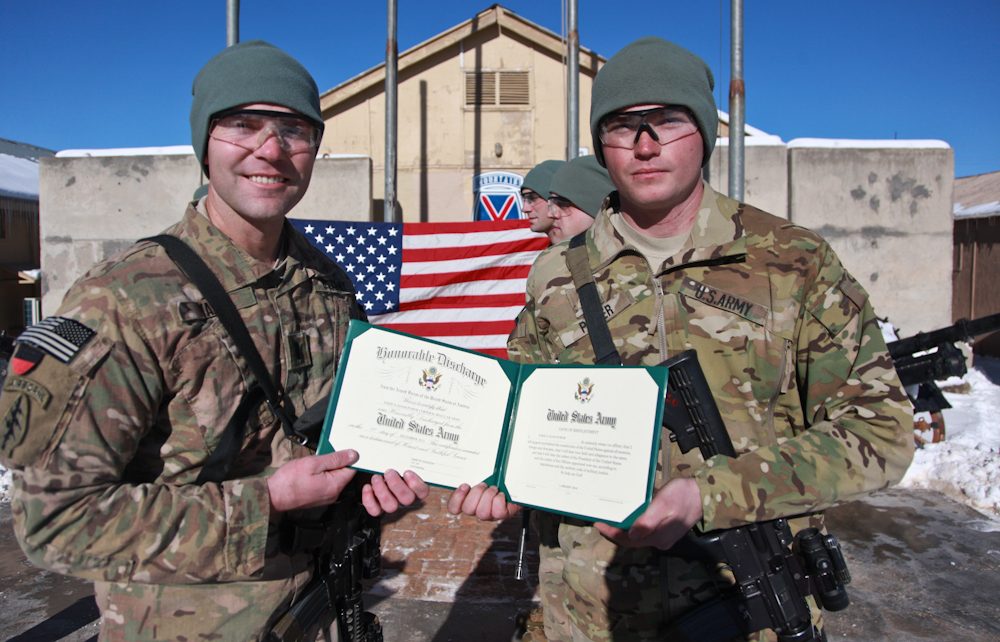When you think about leaving the military, most people think about an easy and planned transition between military life and civilian life. However, sometimes service members seek out a hardship Discharge.
Sometimes even well-thought-out plans do not work out how one expects.
In some cases, service members face situations where the only option to alleviate the hardship is by leaving the military.
In those cases, service members may qualify for a Hardship Discharge.
Related Article – 6 Ways to Get Out of the Military Early
Table of Contents
1. What is the difference between a Dependency and Hardship Discharge?

There is a difference between a Dependency and Hardship Discharge, although they are used casually and interchangeably.
A Dependency Discharge is the need to leave the military to become the primary caregiver because of a death or disability in the family.
On the other hand, a Hardship Discharge means there is a hardship that does not relate to the death or disability of someone in the service member’s immediate family.
2. What Is A Hardship Discharge?
Before discussing a hardship discharge, it is crucial to understand the difference between a discharge and a military separation.
In the case of a discharge, the service member has no obligation to finish the military commitment left on the service contract.
On the other hand, a separation means the service obligation is met through the Individual Ready Reserves.
Since Hardship Discharges revolve around hardships that can only be relieved by a discharge, the service member would not have any further obligation to their service contract.
A Hardship Discharge has criteria to meet as set forth by the Department of Defense.
For instance, the hardship must be significant and not likely to resolve itself without a discharge.
Also, the situation that requires the full attention of the service member must have become worse over time.
Next, the service member must do everything possible to improve the situation before seeking the discharge.
Lastly, the discharge must be the only viable solution.
From there, the specific branches of the military have their own regulations.
All military branches follow the regulations of the Department of Defense.
Also, all the branches have their own regulations that point out evidence and statements necessary to prove the hardship.
All Armed Forces branches agree that the undue hardship cannot be related to a change in income or an inconvenience usual to military life, such as deployments.
Furthermore, all branches prioritize reviewing hardship discharge requests to support the service member as much as possible.
There are differences in the procedures for applying for the Hardship Discharge. However, in all cases, the request must have full documentation and evidence.
Also, in all cases, the requests go up the chain of command.
Related Article – 8 Types of Military Discharge
3. Other Options Instead of a Hardship Discharge
In some cases, the military may consider a Humanitarian Assignment.
A Humanitarian Assignment allows for the service member to be temporarily located closer to home, so the service member has an opportunity to resolve the issue.
Also, the Army calls this type of assignment situation a Compassionate Assignment.
In all cases, it works the same way.
4. Hardship Discharge Benefits / Consequences

An obvious benefit of a hardship Discharge is the ability to work through the hardship itself.
Also, the discharge paperwork will have a discharge characterization, which means it is likely to either be Honorable or General under Honorable Conditions.
Also, in most cases, service members receive their discharge. However, if it a separation, they may transfer to either an active or non-active reserve unit.
Those who receive an honorable discharge are entitled to all earned military benefits.
However, if the discharge characterization is General under Honorable Conditions, the service member receives all earn benefits apart from the educational benefits.
It is wise to reach out to the Veterans Affairs office for information and clarification in either case.
Related Article – Dishonorable Discharge: Reasons, Consequences, and More
5. Hardship Discharge Examples
An example of a Hardship Discharge would be if you are married and have children, but your spouse dies, leaving you to the sole parent to children.
In this case, your kids’ care takes priority, and the military will grant a Hardship Discharge because it is convenient for the government.
After all, the military comes with high risk during deployment, and the children might end up with no parents at all.
Another situation that calls for a Hardship Discharge is if an elderly parent dies, leaving another parent who needs significant care.
For some service members, there is no other family care for the remaining parent.
Therefore, this task falls to the service member by no fault of their own, and the hardship is permanent.
Conclusion
While many service members set out in their military service with a long-term plan to meet their service obligation, sometimes life is unkind, leaving the men and women in uniform in a difficult position.
The Department of Defense clearly defines the expectations for qualifying for a Hardship Discharge.
If the service member meets all the requirements, then the military branch grants the discharge.
In some cases, the service member receives a full discharge, which means they are free from their service contract.
However, if the service member receives a separation, they will finish their obligation in the active or inactive ready reserves in other cases.
References
See Also
General Discharge: 10 Things You (probably) Didn’t Know
- Ikon Pass Military Discount: Learn How To Save Big - January 31, 2025
- RTIC Military Discount: Find Out How To Save Big on Gear - January 30, 2025
- Traeger Military Discount: Learn How To Save Big on Smokers - January 28, 2025





